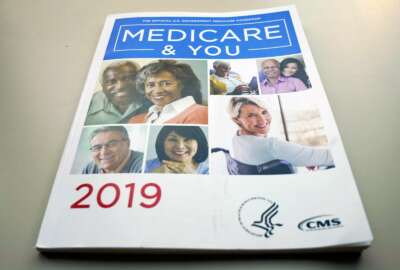So who’s paying way too much for health insurance? Hint: Check the nearest mirror. There’s a good chance that unlucky soul is yours truly!
Health premiums can be hefty. Yet with all the choices in the Federal Employees Health Benefits Program there is no reason someone should pay more than necessary.
Consider the following: Premiums for a single person in the federal employee health benefits program can range from around $1,200 a year to more than $7,500. And that’s after the government pays its share, which is about two-thirds of the total premium.
A family of three next year will pay anywhere from $3080 to as much as $16,000. So it stands to reason that the most expensive plan is the best, right? Cadillac versus Chevy, right?
Wrong — while all of the plans in the FEHBP are good to excellent some simply cost too much. Many are top-heavy with older, less healthy workers and retirees. As their costs go up, so do premiums. The current health insurance open season ends Dec. 9. When it’s over only about 6% of those eligible for the program will have changed plans although Walton Francis, author of Consumers’ Checkbook “Guide To Health Plans for Federal Employees,” says 60% or more should probably change plans.
If wasting a couple thousand dollars next year is no big deal to you, you can skip this. But if you’d be interested in saving $1,000-$2,000 on your federal health plan in 2020, read on.
Francis, who literally wrote the book on the federal health program, said that many, many workers and retirees are paying too much because of the plan they are in. And with a little shopping they could save a bundle and still get excellent coverage.
The Federal Employee Health Benefits Program is considered the finest employer-provided health package in the country. Workers, retirees and their spouses and survivors are eligible for 20-30 plans. That includes national plans like Blue Cross Blue Shield, Aetna, GEHA, APWU and NALC as well as hundreds of local HMOs. People in the same plans pay the same premiums whether they are 22-year-old marathoners or 100-year-olds in assisted living. Nobody can be turned down because of age, sex, pre-existing conditions or personal lifestyle. The government pays anywhere from 70%-75% of the total premium for whichever plan you choose. If you approach your plan’s lifetime limit you can simply switch plans during the annual open season. This year that is Nov. 11 through Dec. 9.
So what are some signs that you may be paying more than you need to?
- Have you been in the same plan for five years or more?
- Have you been in the same plan since you joined the government, or retired?
- Do you get the most expensive high-option plan because it’s got to be the best?
- Do you have no idea what the catastrophic limit is in your plan?
- Do you have no clue what a catastrophic limit is, other than it doesn’t sound good?
- Are you unsure of how many other, maybe less expensive FEHBP plans include your favorite doctor in their network?
- Do you know the difference in drug coverage between different plans?
Many people in the private sector have the same problem but for different reasons. In many companies workers are offered just a few very limited plans. Their employer may pay a small portion of the premium, but not like the lion’s share Uncle Sam routinely picks up.
Many people use the old paralysis-by-analysis cop out. That is, there are simply too many choices, so they do nothing. But there are ways to narrow down your shopping list to just three or four plans — then shop, then save.
Nearly Useless Factoid
By Amelia Brust
In 1926, President Calvin Coolidge was sent a raccoon for his Thanksgiving meal by a Mississippi woman, with a note saying it would be a “toothsome flavor.” Coolidge chose to pardon it, but by then the uniquely North American animal had in fact been a common game meat eaten by Native Americans, then slaves and eventually by restaurant patrons and home cooks as far north as New York City and Maine.
Source: Atlas Obscura
Copyright
© 2024 Federal News Network. All rights reserved. This website is not intended for users located within the European Economic Area.
